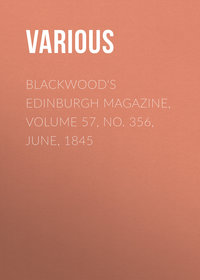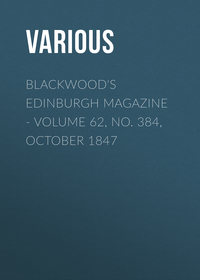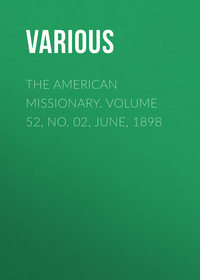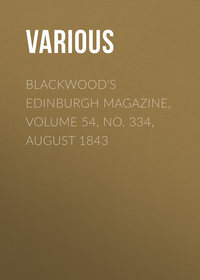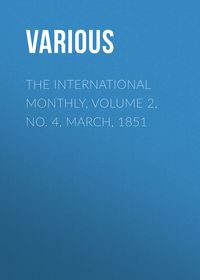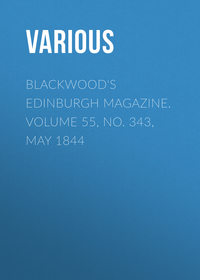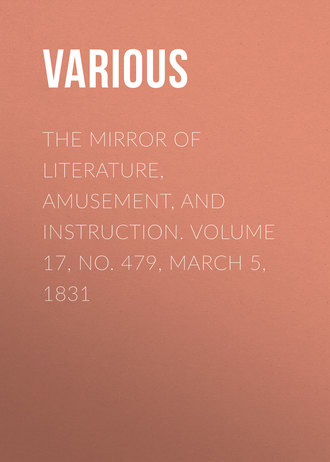 полная версия
полная версияThe Mirror of Literature, Amusement, and Instruction. Volume 17, No. 479, March 5, 1831

Various
The Mirror of Literature, Amusement, and Instruction / Volume 17, No. 479, March 5, 1831

ANCIENT PALACE OF HOLYROOD, AT EDINBURGH
Here is another of the resting-places of fallen royalty; and a happy haven has it proved to many a crowned head; a retreat where the plain reproof of flattery—
How can you say to me,—I am a king?would sound with melancholy sadness and truth.
The reader of "the age and body of the time" need not be told that the tenancy of Holyrood by the Ex-King of France has suggested its present introduction, although the Engraving represents the Palace about the year 1640. The structure, in connexion with the Chapel,1 is thus described in Chambers's Picture of Scotland, vol. ii. p. 61.
The Chapel and Palace of Holyrood are situated at the extremity of the suburb called the Cannongate. The ordinary phrase "the Abbey," still popularly applied to both buildings, indicates that the former is the more ancient of the two. Like so many other religious establishments, it owns David I. for its founder. Erected in the twelfth century, and magnificently endowed by that monarch, it continued for about four centuries to flourish as an abbey, and to be, at least during the latter part of that time, the residence of the sovereign. In the year 1528, James V. added a palace to the conventual buildings. During the subsequent reign of Mary, this was the principal seat of the court; and so it continued in a great measure to be, till the departure of King James VI. for England. Previously to this period, the Abbey and Palace had suffered from fire, and they have since undergone such revolutions, that, as in the celebrated case of Sir John Cutler's stockings, which, in the course of darning, changed nearly their whole substance, it is now scarcely possible to distinguish what is really ancient from the modern additions.
As they at present stand, the Palace is a handsome edifice, built in the form of a quadrangle, with a front flanked by double towers, while the Abbey is reduced from its originally extensive dimensions to the mere ruin of the chapel, one corner of which adjoins to a posterior angle of the Palace. Of the palatial structure, the north-west towers alone are old. The walls were certainly erected in the time of James V. They contain the apartments in which Queen Mary resided, and where her minion, Rizzio, fell a sacrifice to the revenge of her brutal husband. A certain portion of the furniture is of the time, and a still smaller portion is said to be the handiwork of that princess. The remaining parts of the structure were erected in the time of Charles II. and have at no time been occupied by any royal personages, other than the Duke of York, Prince Charles Stuart, the Duke of Cumberland, the King of France, (in 1795-9,) and King George IV. in 1822. In the northern side of the quadrangle is a gallery one hundred and fifty feet in length, filled with the portraits of nearly as many imaginary Scottish kings. The south side contains a suite of state apartments, fitted up for the use of the last-mentioned monarch. These various departments of the Palace, as well as the Chapel, are shown to strangers, for a gratuity, by the servants of the Duke of Hamilton, who is hereditary keeper of the Palace. It may be mentioned, before dismissing this subject, that the precincts of these interesting edifices were formerly a sanctuary of criminals, and can yet afford refuge to insolvent debtors.
From the time of the departure of George the Fourth from Edinburgh, in 1822, Holyrood Palace remained without any distinguished inhabitant until last year, when Charles the Tenth, and his suite, took up their abode within its walls. In the same year too, died George IV.
THE LAST SOUNDS OF BATTLE
(For the Mirror.)Hark! on yonder blood-trod hill,The sound of battle lingers still,—But faint it comes, for every blowIs feebled with the touch of woe:Their limbs are weary, and forgetThey stand upon the battle plain,—But still their spirit flashes yet,And dimly lights their souls again!Like revellers, flush'd with dead'ning wine,Measuring the dance with sluggish tread,Their spirits for an instant shine,Ashamed to show their pow'r hath fled.Bat hark! e'en that faint sound hath died,And sad and solemn up the valeThe silence steals, and far and wideIt tells of death the dreadful tale.J.M.WRETROSPECTIVE GLEANINGS
ANCIENT TOPOGRAPHY OF HOLBORN
(For the Mirror.)The name of Holborn is derived from an ancient village, built upon the bank of the rivulet, or bourne, of the same name.—Stowe says, "Oldborne, or Hilborne, was the water, breaking out about the place where now the Barres doe stand; and it ranne downe the whole street to Oldborne Bridge, and into the river of the Wels, or Turne-mill Brooke. This Boorne was long since stopped up at the head, and other places, where the same hath broken out; but yet till this day, the said street is there called high, Oldborne hill, and both sides thereof, (together with all the grounds adjoining, that lye betwixt it and the River of Thames,) remaine full of springs, so that water is there found at hand, and hard to be stopped in every house."
"Oldborne Conduit, which stood by Oldborne Crosse, was first builded 1498. Thomasin, widow to John Percival, maior, gave to the second making thereof twenty markes; Richard Shore, ten pounds; Thomas Knesworth, and others also, did give towards it.—But of late, a new conduit was there builded, in place of the old, namely, in the yeere 1577; by William Lambe, sometime a gentleman of the chappell to King Henry the Eighth, and afterwards a citizen and clothworker of London, which amounted to the sum of 1,500l.
"Scroops' Inne,2 sometime Sergeant's Inne, was situate against the church of St. Andrew, in Oldborne, in the city of London, with two gardens.
"On the High-streete of Oldborne (says Stowe) have ye many fair houses builded, and lodgings for gentlemen, innes for travellers, and such like, up almost (for it lacketh but little) to St. Giles's in the Fields."
Gerard, the famous herbalist, lived in Holborn, and had there a large botanic garden. Holborn was then in the outskirts of the town on that side. Richard the Third asked the Bishop of Ely to send for some of the good strawberries which he heard the bishop had in his garden in Holborn.
"In 1417, Lower Holborn (says Brayley) one of the great inlets to the city, was first paved, it being then described as a highway, so deep and miry, that many perils and hazards were thereby occasioned; and the King, at his own expense, is recorded to have employed two vessels, each of twenty tons burthen, for bringing stones for that purpose.
"In 1534 an act was passed for paving with stone the street between Holborn Bridge and Holborn Bars, at the west end thereof, and also the streets of Southwark; and every person was made liable to maintain the pavement before his door, under the forfeiture of sixpence to the king for every square yard."
On the south side of Holborn Hill was St. Andrew's Church, of considerable antiquity; but rebuilt in a plain, neat manner. Here was buried Thomas Wriothesley, lord chancellor in the latter part of the life of Henry the Eighth: a fiery zealot, who (says Pennant) not content with seeing the amiable Anne Askew put to the torture, for no other crime than difference of faith, flung off his gown, degraded the chancellor into the bureau, and with his own hands gave force to the rack.
"Furnival's Inn was one of the hosteries belonging to Lincoln's Inn, in old times the town abode of the Lords of Furnivals.
"Thaive's Inn was another, old as the time of Edward the Third. It took its name from John Tavye.
"Staples Inn; so called from its having been a staple in which the wool-merchants were used to assemble.
"Barnard's Inn, originally Mackworth's Inn, having been given by the executors of John Mackworth, dean of Lincoln, to the dean and chapter of Lincoln, on condition that they should find a pious priest to perform divine service in the cathedral of Lincoln—in which John Mackworth lies interred.
"Hatton Garden was the town house and gardens of the Lord Hatton, founded by Sir Christopher Hatton, lord-keeper in the reign of Queen Elizabeth. The place he built his house on was the orchard and garden belonging to Ely House.
"Brook House was the residence of Sir Fulke Greville, Lord Brooke.
"Southampton Buildings, built on the site of Southampton House, the mansion of the Wriothesleys, earls of Southampton. When Lord Russel passed by this house, on his way to execution, he felt a momentary bitterness of death, in recollecting the happy moments of the place. He looked (says Pennant) towards Southampton House, the tear started into his eye, but he instantly wiped it away.
"Gray's Inn is a place of great antiquity: it was originally the residence of the Lord Grays, from the year 1315, when John, the son of Reginold de Grey, resided here, till the latter end of the reign of Henry the Seventh, when it was sold, by Edmund Lord Grey, of Wilton, to Hugh Dennys, Esq., by the name of Portpole; and in eight years afterwards it was disposed of to the prior and convent of Shene, who again, disposed of it to the students of the law; not but that they were seated here much earlier, it appearing that they had leased a residence here from the Lord Grays, as early as the reign of Edward the Third. Chancery Lane gapes on the opposite side, to receive the numberless malheureuses who plunge unwarily on the rocks and shelves with which it abounds."
P.T.WANCIENT SLAVERY IN ENGLAND
(For the Mirror.)"O Freedom! first delight of human kind."DRYDEN.Sharon Turner, in his interesting "History of the Anglo-Saxons," says, "It was then (during the reign of Pope Gregory I.) the practice of Europe to make use of slaves, and to buy and sell them; and this traffic was carried on, even in the western capital of the Christian Church. Passing through the market at Rome, the white skins, the flowing locks, and beautiful countenances of some youths who were standing there for sale, interested Gregory's sensibility. To his inquiries from what country they had been brought, the answer was, from Britain, whose inhabitants were all of that fair complexion. Were they Pagans or Christians? was his next question: a proof not only of his ignorance of the state of England, but also, that up to that time it had occupied no part of his attention; but thus brought as it were to a personal knowledge of it by these few representatives of its inhabitants, he exclaimed, on hearing that they were still idolaters, with a deep sigh, 'What a pity that such a beauteous frontispiece should possess a mind so void of internal grace.' The name of their nation being mentioned to be Angles, his ear caught the verbal coincidence—the benevolent wish for their improvement darted into his mind, and he expressed his own feelings, and excited those of his auditors, by remarking—'It suits them well: they have angel faces, and ought to be the co-heirs of the angels in heaven.'
"The different classes of society among the Anglo-Saxons were such as belonged to birth, office, or property, and such as were occupied by a freeman, a freedman, or one of the servile description. It is to be lamented in the review of these different classes, that a large proportion of the Anglo-Saxon population was in a state of abject slavery: they were bought and sold with land, and were conveyed in the grants of it promiscuously with the cattle and other property upon it; and in the Anglo-Saxon wills, these wretched beings were given away precisely as we now dispose of our plate, our furniture, or our money. At length the custom of manumission, and the diffusion of Christianity, ameliorated the condition of the Anglo-Saxon slaves. Sometimes individuals, from benevolence, gave their slaves their freedom—sometimes piety procured a manumission. But the most interesting kind of emancipation appears in those writings which announce to us, that the slaves had purchased their own liberty, or that of their family. The Anglo-Saxon laws recognised the liberation of slaves, and placed them under legal protection. The liberal feelings of our ancestors to their enslaved domestics are not only evidenced in the frequent manumissions, but also in the generous gifts which they appear to have made them. The grants of lands from masters to their servants were very common; gilds, or social confederations, were established. The tradesmen of the Anglo-Saxons were, for the most part, men in a servile state; but, by degrees, the manumission of slaves increased the number of the independent part of the lower orders."
When the statute 1st. Edward VI. c. 3. was made, which ordained, that all idle vagabonds should be made slaves, and fed upon bread, water or small drink, and refuse of meat; should wear a ring round their necks, arms, or legs; and should be compelled, by beating, chaining, or otherwise, to perform the work assigned them, were it ever so vile;—the spirit of the nation could not brook this condition, even in the most abandoned rogues; and therefore this statute was repealed in two years afterwards, 3rd and 4th of Edward VI. c. 16.
P.T.WFINSBURY
(For the Mirror.)Fitzstephen, in his Description of London, 1282, gives the following account of skating in Moor, or Finsbury Fields, which may afford amusement to the inquisitive reader:—
"When that vast lake which waters the walls of the city towards the north is hard frozen, the youths, in great numbers, go to divert themselves on the ice—some, taking a small run for an increment of velocity, place their feet at a proper distance, and are carried sideways a great way; others will make a large cake of ice, and seating one of their companions upon it, they take hold of one's hands, and draw him along, when it happens that moving swiftly on so slippery a plane, they all fall headlong; others there are who are still more expert in these amusements on the ice—they place certain bones (the leg-bones of animals) under the soles of their feet, by tying them round their ankles, and then taking a pole, shod with iron, with their hands they push themselves forward by striking it against the ice, and are carried on with a velocity equal to the flight of a bird, or a bolt discharged from a cross-bow."
This tract affords the earliest description of London; and Dr. Pegge, in his preface to said Description, says, "I conceive we may challenge any nation in Europe to produce an account of its capital, or any other of its great cities, at so remote a period as the 12th century."
J.RTHE SELECTOR; AND LITERARY NOTICES OF NEW WORKS
MOUNT ST. MICHAEL
No. 65 of Constable's Miscellany, just published, consists of A Journal of a Residence in Normandy, by J.A. St. John, Esq. This volume falls in opportunely enough for the further description of Mount St. Michael, engraved in No. 477 of The Mirror.
Breakfasting in haste, I procured a horse and a guide, and set out for the mount, no less celebrated for its historical importance, than for the peculiarity of its position. As soon as I had emerged from the streets of Avranches, I saw before me a vast bay, now entirely deserted by the tide, and consisting partly of sand, partly of slime, intersected by the waters of several rivers, and covered, during spring tides, at high water.—Two promontories, the one bluff and rocky, the other sandy and low, project, one on either hand, into the sea; and in the open space between these two points are two small islands, from around which the sea ebbs at low water: one of them is a desert rock, called the Tombelaine, and the other the Mont St. Michel.3 The space thus covered and deserted alternately by the sea is about eight square leagues, and is here called the Grève.
The Mont St. Michel, which is about the same height as the Great Pyramid of Egypt, and now stood, as that does, upon a vast plain of sand, which is here, however, skirted in its whole length by the sea, has a very striking and extraordinary aspect. It appeared, as the water was so close behind it, to rise out of the sea, upon the intense and dazzling blue of which its grey rocks and towers were relieved in a sharp and startling manner; and, as I descended lower and lower on the hill-side, and drew near the beach, its pinnacles seemed to increase in height, and the picturesque effect was improved.
At length I emerged from the shady road upon the naked beach, and saw the ferry-boat and the Charon that were to convey me and my charger over the first river. My Avranches guide here quitted me; but I had been told that the ferryman himself usually supplied his place in piloting strangers across the quicksands, which, owing to the shifting of the course of the rivers, are in constant change, and of the most dangerous character. Horses and their riders, venturing to select their own path over the sands, have been swallowed up together, and vessels, stranded here in a tempest, have in a short time sunk and disappeared entirely. The depth of what may perhaps be termed the unsolid soil, is hitherto unknown, though various attempts have been made to ascertain it. In one instance, a small mast, forty feet high, was fixed up in the sands, with a piece of granite of considerable weight upon the top of it; but mast, granite, and all, rapidly disappeared, leaving no trace behind. It is across several leagues of a beach of this nature that one has to approach the Mont St. Michel.
The scene which now presented itself was singular and beautiful. On the right the land, running out boldly into the sea, offered, with its rich verdure, a striking contrast to the pale yellow sands beneath. In front, the sea, blue, calm, waveless, and studded in the distance with a few white sails, glittering in the sun, ran in a straight line along the yellow plain, which was, moreover, intersected in various directions by numerous small rivers, whose shining waters looked like molten silver. To add to the effect of the landscape, silence the most absolute brooded over it, except when the scream of a seamew, wheeling about drowsily in the sunny air, broke upon the ear. The mount itself, with its ancient monastic towers, rearing their grey pinnacles towards heaven, in the midst of stillness and solitude, appeared to be formed by nature to be the abode of peace, and a soft and religious melancholy.
For some time I rode on musing, gazing delightedly at the scene, and recalling to mind the historical events which had taken place on those shores, and rendered them famous. The cannon of England had thundered on every side, and her banners had waved triumphantly from the towers before me. My reflections, however, were soon called off from these towering topics, being interrupted by the loud laugh of a party of soldiers and wagoners, who were regaling themselves with fresh air at the gate of the fortress.
Dismounting here, I entered the small town which clusters round the foot of the mount within the wall; and whatever romance might have taken lodging in my imagination, was quickly put to flight by the stink, and filth, and misery, which forced themselves upon my attention. I never beheld a more odious den. Leaving my horse and guide at a cabaret, I ascended the only street in the place, which winding about the foot of the mountain, leads directly to the castle. Toiling up this abominable street, and several long and very steep flights of steps, I at length reached the door, where, having rung, and waited for some time, I was admitted by a saucy gendarme, who demanded my business and my passport in the most insolent tone imaginable. I delivered up my passport; and while the rascal went to show it to the man in office—governor, sub-governor, or some creature of that sort—had to stand in the dismal passage, among a score or two of soldiers. In general, however, French soldiers are remarkably polite, and these, with the exception of the above individual, were so also. Even he, when he returned, had changed his tone; for, having learned from his superior that I was an Englishman, he came, with cap in hand, to conduct me round the building.
The first apartment, after the chapel, which is small, and by no means striking, into which I was led, was the ancient refectory, where there were some hundreds of criminals, condemned for several years to close imprisonment, or the galleys, weaving calico. I never in my life saw so many demoniacal faces together.
The apartment in which these miscreants were assembled, was a hall about one hundred feet long, by thirty-five or forty in breadth, and was adorned with two rows of massy, antique pillars, resembling those which we find in Gothic churches. From hence we proceeded to the subterranean chapel, where are seen those prodigious columns upon which the weight of the whole building reposes. The scanty light, which glimmers among these enormous shafts, is just sufficient to discover their magnitude to the eye, and to enable one to find his way among them. Having crossed this chapel, we entered the quadrangular court, around which the cloisters, supported by small, graceful pillars, of the most delicate workmanship, extend. Here the monks used to walk in bad weather, contriving the next day's dinner, or imagining excuses for detaining some of the many pretty female pilgrims who resorted, under various pretences, to this celebrated monastery. At present, it affords shelter to the veterans and gendarmes who keep guard over the prisoners below.
From various portions of the monastery, we obtain admirable views of sea and shore; but the most superb coup-d'oeil is from a tall slender tower, which shoots up above almost every other portion of the building. Hence are seen the hills and coasts of Brittany, the sea, the sandy plain stretching inland, with the rivers meandering through it, and the long sweep of shore which encompasses the Grève, with Avranches, and its groves and gardens, in the back ground. Close at hand, and almost beneath one's feet, as it were, is the barren rock called the Tombelaine, which, though somewhat larger than the Mont St. Michel, is not inhabited. Even this rock, however, was formerly fortified by the English; and several remains of the old towers are still found among the thorns and briers with which it is at present overrun. Several fanciful derivations of the word Tombelaine are given by antiquaries, some imagining it to have been formed of the words Tumba Beleni, or Tumba Helenae; and in support of the latter etymology, the following legend is told:—Helen, daughter of Hoël, King of Brittany, was taken away, by fraud or violence, from her father's court, by a certain Spaniard, who, having conducted her to this island, and compelled her to submit to his desires, seems to have deserted her there. The princess, overwhelmed with misfortune, pined away and died, and was buried by her nurse, who had accompanied her from Brittany.
At the Mont St. Michel was preserved, until lately, the enormous wooden cage in which state prisoners were sometimes confined under the old regime.
The most unfortunate of the poor wretches who inhabited this cage was Dubourg, a Dutch editor of a newspaper. This man having, in the exercise of his duty, written something which offended the majesty of Louis XIV., or some one of his mistresses, was marked out by the magnanimous monarch for vengeance; and the means which, according to tradition, he employed to effect his purpose, was every way worthy of the royal miscreant. A villain was sent from Avranches to Holland, a neutral state, with instructions to worm himself into the friendship and confidence of Dubourg, and, in an unguarded moment, to lead him into the French territories, where a party of soldiers was kept perpetually in readiness to kidnap him and carry him off. For two years this modern Judas is said to have carried on the intrigue, at the end of which period he prevailed upon Dubourg to accompany him on a visit into France, when the soldiers seized upon their victim, and hurried him off to the Mont St. Michel.


